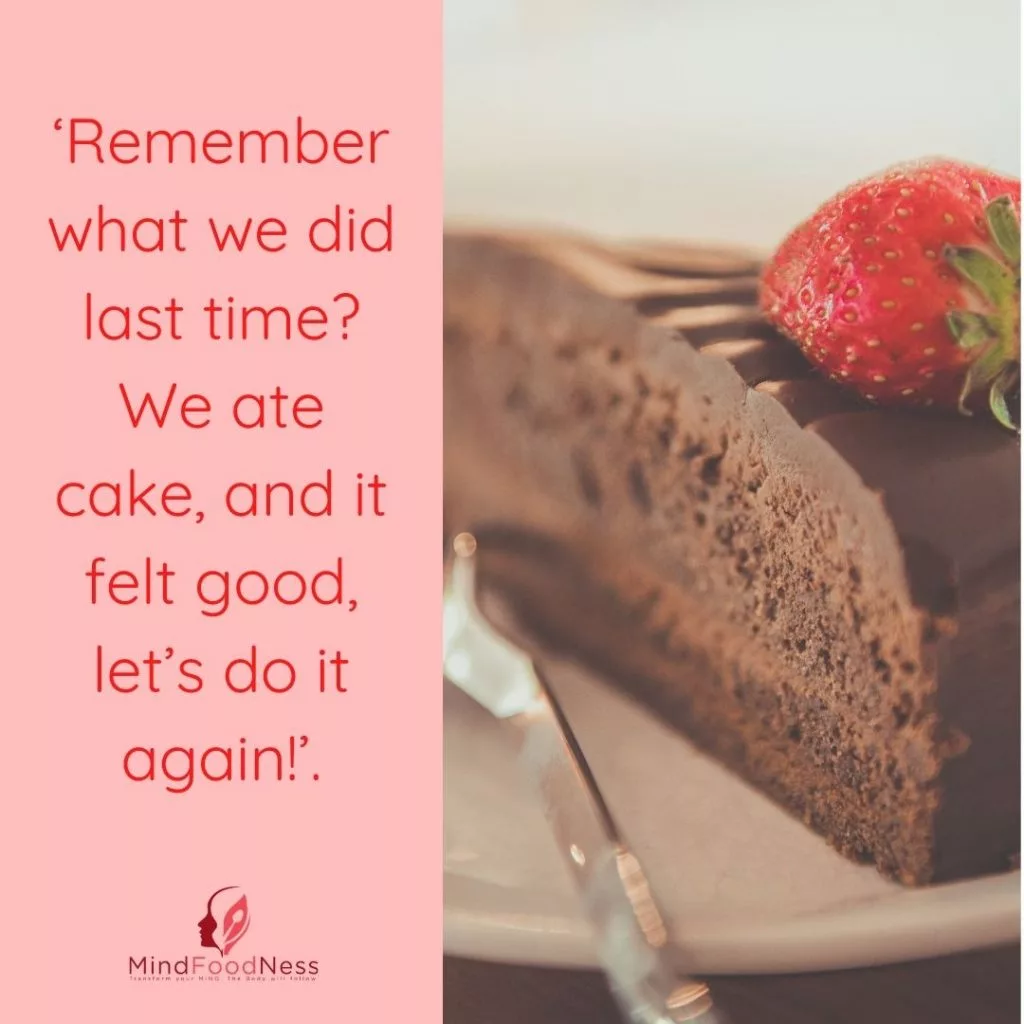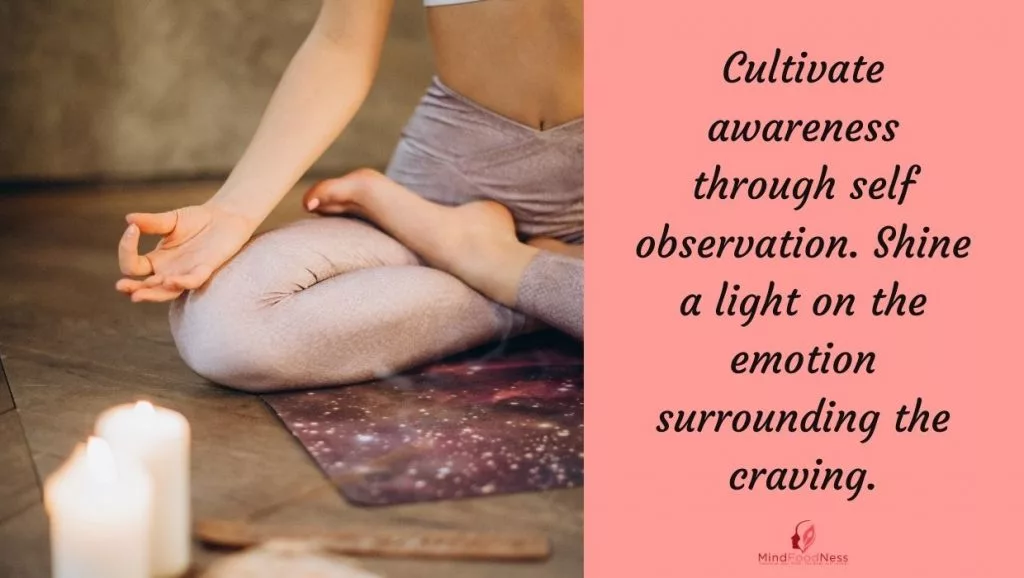How to break the habit of overeating, binge eating and emotional eating?
What if emotional eating, binge eating and overeating is a habit we have learned over our lifetime? Does it mean we can unlearn it?
Le’s have a look!
HAVE YOU EVER THOUGHT?…
‘I have a food problem’ or ‘I am addicted to food’? Or do you feel like something literally takes over you, and you can’t control what or how much you eat? In my work, I have identified 8 triggers that drive binge eating and overeating. This is blog #3 of the Binge Eating Trigger Series, specifically about habits (and how to break them).
HABITS ARE CREATED THROUGH REPETITION
Do you find doing your shoelaces difficult? Probably not. Why? Because you have practised so many times and no longer need to think about it. The same applies to driving. Of course, in the beginning, it was challenging. But through practice and repetition, you solidified a robust habit. Pathways in our brain fire repeated synapses to make it automatic. So, if repetition creates habits, we can just as easily change habits through the same process.

HOW TO BREAK THE HABIT INVOLVES UNDERSTANDING HABIT FORMATION
Essentially, there are 3 components of habit creation:
- First, there is a trigger (for example you feel sad)
- Second, you act out a behavior (for example, you eat)
- Third, you receive a reward (for example, you feel good for that moment)
Trigger – Behaviour – Reward
SO, WHAT IS A TRIGGER?
A trigger is something that activates our urge to eat in the brain. Essentially, it is an event or sensation that creates the automatic compulsion to do the habit. For example, if you binge eat when you feel stressed (stress = the trigger). So, if you do the same behavior of eating numerous times for the same trigger, your brain remembers the feel-good sensation food gave us, so seeks it out next time we feel stressed.

HUMAN PSYCHOLOGY SEEKS PLEASURE TO AVOID PAIN
It is critical to understand that food rewards us and changes how we feel. And it achieves this instantaneously (just like drugs do). So next time when you feel sad, your brain remembers what you did last time. It will send a signal and say: ‘Remember what we did last time? We ate cake, and it felt good, let’s do it again!’. This will repeat over and create an automatic loop – almost as if something has taken over.

Eating is a Learned behaviour
It is vital to recognize that eating habits are often learned behaviours from childhood. So give yourself grace. For example, when you cleaned your bedroom your parents gave you a treat. Or when you were sad, your parents said ‘Let’s get ice cream’. You learn at a subconscious level, ‘When I am sad and eat ice cream I feel good’. So it’s not surprising that many of us emotionally eat!
HOW TO BREAK THE HABIT
Overall, the aim is to take the habit off autopilot by either eliminating the trigger or changing the behaviour.
1)IDENTIFY AND CHANGE THE TRIGGER
Identify if there are certain emotions surrounding the binge eating. Are you stressed? Sad? Angry? Identify what you feel at the times you tend to overeat. By doing this, you are cultivating awareness through self-observation. You are shining a light on the emotional trigger.

ELIMINATE OR CHANGE THE TRIGGER TO BREAK THE HABIT
Ask yourself – Can I break, eliminate, or change the trigger? For example, imagine your trigger was stress. Obviously, we can’t change situations, but we can change how we perceive it. So ask yourself, ‘What meaning am I giving to this situation?’ Sometimes the same situation can look completely different for different people. Perhaps it’s not the worst thing to happen, but the best? How can you reframe? Or if you feel lonely, can you reach out to a friend? If you are sad, can you allow the feeling instead?
If we can’t do this (for example we are a new mother and our baby is not sleeping through the night and we are utterly sleep-deprived which is causing overeating) – we need to focus on changing behaviour.

2) Change the behaviour
If it’s impossible to change or reduce the trigger, let’s look at the behaviour. So, ask yourself, ‘I know I am eating when I am tired, so what is it I can do to help myself when I am tired?’. Because sometimes just being aware of what is driving the urge to eat help. Ask yourself this…
- Can I find a moment to rest?
- Can I ask someone for help?
- What can I implement and do to get some support and energy?
- How can I get more rest?
3) REWARD
Finally, understand the ultimate reward (or state) you might be seeking through food. What do we get from this behaviour? For some, it’s happiness or a calming effect. So eating might be a way of self-soothing or a comforting remedy.
CLOSE YOUR EYES…
Close your eyes and tap into what will give you true happiness and joy of a fulfilled life. In this way, we shine a light on the intrinsic reward you are craving instead of the temporal dopamine hit from the chocolate. These are very different. I personally find this article on 8 Dimensions of wellness interesting to look at our well-being from a holistic perspective.

HOW TO BREAK THE HABIT OF HOW WE USE FOOD? I AM HERE TO HELP!
The idea of breaking the habit of overeating might feel overwhelming. Especially if we have been “creating and developing” this habit over our life time. If you would like support I have a 9-week online group coaching program where I personally guide you through this process. Register here to be notified for the next intake. Or download my free workbook to help you identify what trigger might be driving the binge eating. Let’s break that habit because life is way too short worrying about food!
6 KEY STEPS TO
FREE GUIDE REVEALS
8 Hidden Reasons for Binge Eating and Overeating
Feel in control around food especially in stressful situations and end the cycle of eating secretly, feeling guilty and ashamed.
Reveal the hidden reasons why you can’t stop thinking about food and find out what you can do to feel normal around food again.



